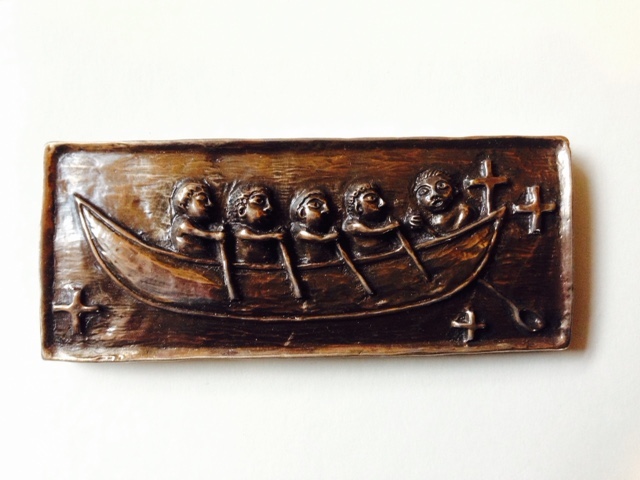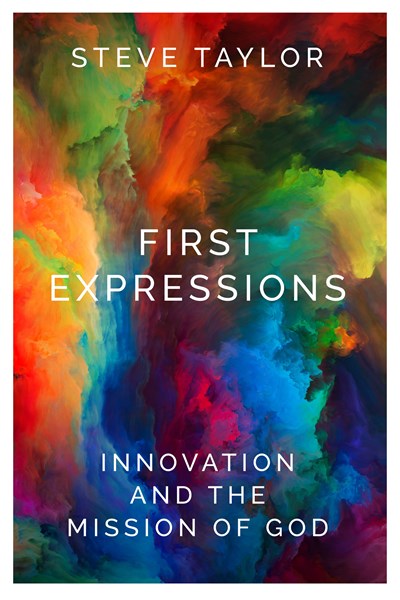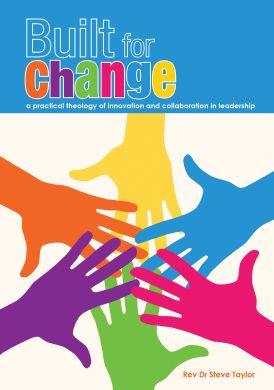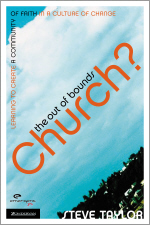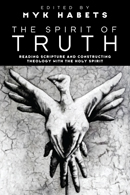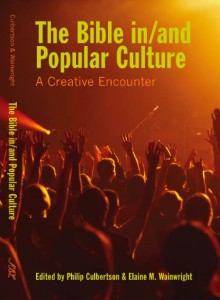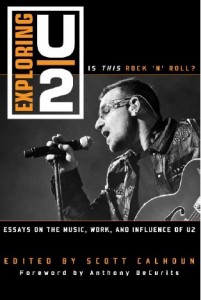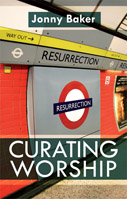Thursday, April 23, 2020
5 practices for cultivating safe and prayerful space online: #ministry in isolation4
A resource – video and written summary – I produced this week. It is part of a series of interviews I am doing, called #ministry in isolation, which is spotlighting ecclesial innovation in the context of external (lockdown) restraints:
Jill McDonald #ministryinisolation4 from JaneThomsen on Vimeo.
How can God build a tapestry of love online through skilled leadership?
“Going online felt better. Being part of the river of God’s healing love. It felt profound. Lifegiving … A tapestry of prayer and love across Aotearoa,” concludes Jill.
Steve Taylor, from KCML, interviews Jill McDonald, from St Andrew’s Presbyterian Church in Hastings about her leadership of Sacred Space Whakamoemiti. Why did she take this short midweek prayer service online, and what was the result? What has been learnt?
The interview outlines five practices for cultivating safe and prayerful space online.
Such experiences require skilled leadership. Here are the five tips for creating sacred space online.
1. The value of a pre-gathering bidding question. Prepare people to participate by sending out prior a question you will be inviting response to during the online experience. A bidding question clarifies purpose. It communicates an ethos of participation and gives people space to prepare. This is likely to enhance the depth of participation and a sense of meaningful engagement.
2. Guiding the conversation through a focused question. Rather than offer an open space for anyone to answer, call people by name. It could be clockwise around your screen, or top of the land to the bottom. Being directive lets people know when and how they will be able to participate.
3. Modelling through drawing first on those familiar with the culture. Begin asking focused questions of people who have been before. They have experienced the culture of the group and the length, depth and type of responses.
4. Create a pass. Give words that allow people to pass. “I’m going to go around and call people by name. If you don’t yet have a response, just say “pass.”” Giving a specific word reduces a sense of forced participation.
5. Work to a settled rhythm. In the familiarity, there is safety. People can settle into their work. Good liturgy has call and response which gives direction. A pattern of welcome, a settling question to ensure folk have heard their voice, a sound to start and end a period of silence, a repeated ending ritual. It means that participants are more likely to settle into prayer if they are aware of where they are heading.
Steve Taylor and Jill McDonald
21 April 2020
Friday, February 28, 2020
Making matters
Making matters: yarn-bombing and craftivism in contemporary Christian mission
What is the role of making in contemporary culture? From pink pussy hats to yarnbombing – craftivism combines craft and activism, providing hands-on ways to engage in change. In 2014, Christmas Angels began as a project of Methodist churches in the North of England, yarn-bombing their communities with hand-made angels. By 2018, the number of Christmas Angels knitted in Great Britain were too many to count. Steve Taylor shares his research, focused on those who received these angels. How was good news as craft experienced? How might making provide new insights into Christian faith and mission as hands-on?
St Lukes Remuera, 130 Remuera Road, 7:30-9 pm, Thursday 5th March.
Steve Taylor is Principal of Knox Centre for Ministry and Leadership and author of 3 books and over 200 articles and publications. His latest study leave involved learning to knit and using digital ethnographies to study making in mission. Steve Taylor is married to Lynne, and together they enjoy two adult children.
Thursday, December 19, 2019
When Christmas Angels tweet – a research summary as book contribution
One of my 2019 tasks has been a research project investigating the impact of Christmas Angels, a form of Christian witness that began in the north of England in 2014. (A brief summary for my denominational magazine is here). The research project began on the edges of my sabbatical, a creative break in the grind of book completion. It made possible a conference presentation at the Ecclesiology and Ethnography conference (thanks workplace).
Following the conference, I had an email from one of the keynote speakers, Mary Clark Moschella. They had sat in on my conference presentation and the email was one of congratulations, describing my research as highly imaginative.
It was also an email of invitation. Mary was working on revising Ethnography As A Pastoral Practice: An Introduction. She was wanting to include a couple of brief research summaries as examples at the end of the book. Might this include a summary of my research? She noted my research would serve a number of purposes in a revised edition. It would automatically update the work and appeal to students who are considering undertaking online research. It lifts up the feminist implications of craftivism and would exemplify a fresh approach to practical theology based on making. It was a wonderful and encouraging email to receive.
I had already submitted my research to an academic journal so there were copyright implications to consider. But this request was asking something quite different, with a focus on explaining the research to students in a step-by step way, concentrating on the bare bones of the research methodology and process, the ethical considerations, and theological reflections.
Ethnography As A Pastoral Practice: An Introduction is a book I use in my teaching and to be invited to contribute to a revised edition was a real affirmation of the research and the presentation! So in the cracks of time over the last few months, I’ve been working away on a distinctive piece of writing.
Yesterday I was able send off 4,500 words, tenatively titled – When Christmas Angels tweet: making matters and practical theology in researching mission online, seeking feedback from Mary.
 It might well need reworking, or be deemed not suitable. But it has been wonderful to write, sharing the research journey, including my learning to knit and in conversation with Fieldwork in Theology: Exploring the Social Context of God’s Work in the World (The Church and Postmodern Culture)
It might well need reworking, or be deemed not suitable. But it has been wonderful to write, sharing the research journey, including my learning to knit and in conversation with Fieldwork in Theology: Exploring the Social Context of God’s Work in the World (The Church and Postmodern Culture). There is also some new theological reflection, developing a theological reading of the knitting (Buxtehude) Madonna.
The sending brought to 9* my academic research outputs for the 2019 year. It’s been a highly productive year:
- 1 book – First Expressions
- 5 academic journal articles (3 accepted following revise/resubmit; 2 revise/resubmit work in process)
- 2 book chapters (writing up of conference presentations)
- 1 (successful) $130,000 research grant (further announcements pending)
Obviously the 15 weeks of sabbatical has helped my productivity, giving sustained space to complete a range of products. So also has been writing in partnerships. 4 of the 9 outputs have been co-authored with 3 people in different types of writing partnerships. So has a work situation, which in complexity has required me to re-order where my creativity can be offered. With less creativity required in some areas, an unintended benefit has been increased productivity in the cracks of time. I’m not spending any more time writing, just finding in retrospect, that the time I spend writing is proving to be highly generative.
* My rule of thumb is 1 “industry” ie church-facing output for every 1 “academic” output, in which I seek to express theological thinking in accessible and church-facing places. In 2019, there has also been 19 industry/”church-facing outputs including 11 film reviews in Touchstone, 2 SPANZ columns, 1 Zadok column, 2 Weekly Worship lectionary guides, 1 devozine youth resource, 1 Candour blog, 1 SCM blog.
Monday, April 01, 2019
Craftivism as a missiology of making
A conference proposal I have just submitted for the ANZATS 2019 conference in Auckland. It seeks to take forward the presentation I gave at the Transitional Cathedral last year (a summary of which was included in Cathedral Extra here).
Where #christmasangels tread: Craftivism as a missiology of making
Craft-ivism combines craft and activism. Craft-ivists utilise needlework, including yarn-bombing, cross-stitch and pink pussy hats, in collective acts of protest and solidarity (Knitting for Good!: A Guide to Creating Personal, Social, and Political Change Stitch by Stitch). This paper considers craft-ivism as a contemporary form of mission, with a focus on Christmas angels. In the UK in 2014, some 2,870 Christmas angels were knitted and left in public places, with a message of Christian love. By 2016, this had risen to 45,930.
Given that many Christmas angels included a twitter hashtag, technology can be utilised to access empirical data (Creative Research Methods in the Social Sciences: A Practical Guide) regarding the experiences of those who received this particular form of Christian witness. This paper will examine 1,100 “#christmasangel” tweets. Content analysis will provide insights regarding how recipients make sense of this fresh expression of Christian witness, while geographic mapping suggests that Christmas angels have taken flight all over Great Britain.
Christine Dutton argues that acts of making are spiritual practices that can be formative in the making of new forms of Christian community. This suggests that practices of craft-ivism can be read theologically. Hence, a Christology of making will be developed, reading Proverbs 22:2 “the Lord is the maker” in dialogue with David Kelsey’s theological anthropology (Eccentric Existence: A Theological Anthropology (2-Volume Set)). God is revealed as practicing delight (crafting), wonder (making) and perseverance (a discipline known to all crafters and makers). Hence, acts of craftivism are both a participation in the being and acting of God as maker and a spiritual means of connecting with the world. Missiology is invited to ‘make’ a domestic turn, by participating in practices of making.
(Photo by Michael Mroczek on Unsplash)
Wednesday, May 03, 2017
online resourcing by KCML in mission
 It was an exciting day for KCML today as we hosted our first ever online learning opportunity for ministers. We used video conferencing technology and had 12 participants from around New Zealand join us to explore listening in mission. It was lovely to welcome folk from the breadth and diversity of NZ, particularly rural folk in Central Otago, Marlborough, Waikato, North and South Canterbury. (We also had five apologies. They will be sent the recording of the session and invited to engage with us if they have further questions.)
It was an exciting day for KCML today as we hosted our first ever online learning opportunity for ministers. We used video conferencing technology and had 12 participants from around New Zealand join us to explore listening in mission. It was lovely to welcome folk from the breadth and diversity of NZ, particularly rural folk in Central Otago, Marlborough, Waikato, North and South Canterbury. (We also had five apologies. They will be sent the recording of the session and invited to engage with us if they have further questions.)
We read Scripture together, using lectio divina to explore the movement between text and context. We heard two short stories of how listening in mission changed us. We were introduced to two components of the Listening in Mission Practical Learning course. First, five online sessions that will be a support and an encouragement. It is lonely leading in mission and we need ways to encourage and be encouraged. Second, a listening in mission project. Each participant is invited to conduct a listening in action in their community, gathering a team of 4-6 people to engage in four guided listening exercises. This is embodied listening, quite different from surveys or census data.
Today felt small and yet big. Small, in that the sixty minutes flashed by. Small in that other education providers have been doing this for years.
Big, in that the technology worked, the audio was good, the group made immediate and excellent use of chat. Big in that KCML is resourcing ministers without requiring them to travel. Big in that this could apply in other areas of KCML life – a further course on experimenting in mission, or growing in preaching or enhancing resilience in leadership etc etc.
The KCML vision is
create, partner and sustain
innovative learning communities and ministries and
cultivate
mobile, accessible and collaborative theological reflection and formation.
Today we did that. We created a learning community, by being mobile in technology, accessible in taking a process we use with our interns and making it available more widely, collaborative as three KCML Faculty worked together to share the leadership.
It was an exciting day for KCML today.
Wednesday, April 05, 2017
Listening in mission practical course
Knox Centre for Ministry and Leadership is inviting ministry practitioners into a listening in mission practical learning course. Listening is an active process, in which we grow by doing. It begins with action, stepping into the space of another. It proceeds by “double listening” – to God and people. Online technologies will be used to support ministers in undertaking a practical project in their community.
Participants will commit to 6 online sessions (including the first introductory webinar) with ministry colleagues and the KCML team of Mark Johnston, Rosemary Dewerse and Steve Taylor. Participants will also commit to a practical local project, gathering a team of 4-6 from their church to engage in 4 guided listening local exercises. As a result, a spirituality of presence, community building, attentiveness, discernment, experimentation will be encouraged.
Free information webinar Wednesday, May 3, 4:45-5:45 pm.
Then 4:45-6:15 pm
May 24
July 26
Aug 30
Sept 20
Oct 25
Places limited. Booking and queries to Steve Taylor:
principal@knoxcentre.ac.nz
Thursday, December 10, 2015
Praying for Paris: an empirical study
Praying for Paris: an empirical study of how local churches respond to global events
Researchers: Dr Steve Taylor and Lynne Taylor
Introduction: Faith lives in a complex relationship with surrounding culture. Christians inhabit a set of beliefs regarding who God is and how God acts in our world today. These become particularly pointed when tragedy strikes. How does the church respond to unexpected violence? What resources does the church draw upon? How to speak of the nature of God, humans and Christian responses to tragedy?
One place to seek answers to these questions is in pastoral prayer. Christian practices articulate a practical theology. As such, the gathered worship service is theory laden, offering insight into Christian understandings of how God is engaged in human history. What Christians pray – what they do and do not say – is thus a potentially fruitful avenue for conducting research into ecclesiastical and religious practice.
Such an approach is suggested in Coakley and Wells, Praying for England: Priestly Presence in Contemporary Culture, who explore not only the complexity of liturgical leadership, but also how those who pray and preach in fact become active agents that draw forth the desires and prayers from among those they serve.
This research project seeks to understand how local churches prayed on Sunday 15 November. The date is significant because on Friday, 13 November, a series of coordinated terrorist attacks occurred in Paris. At the same time, a number of other tragedies occurred, including bombings in Beirut and Baghdad. As churches gathered on Sunday 15 November, how did they pray? What factors were at work in the choice to pray, or not? What resources might have been drawn upon? What theologies were at work in the response?
Method: The aim was to conduct an empirically descriptive study, in order to reflect theologically on ecclesiastical practice, in this case the church service. An online survey, was designed, consisting of ten questions. It was piloted with a number of colleagues at Knox Centre for Ministry and Leadership. An email was then sent to pastoral leaders in two New Zealand denominations, the Presbyterian Church of Aotearoa New Zealand and the Baptist Churches of Aotearoa New Zealand, inviting them to participate in the online survey. A notice was also posted on twitter and Facebook, asking people to share. This presented three different and distinct avenues for gaining data.
The research has a number of possible benefits. These include
• understanding the factors that shape how churches respond to tragedy
• provide insight into the theodicies at play in contemporary ecclesial practice
• providing understanding of church practice, as a resource for training of future leaders in theological reflection, congregational leading and worship leading and to assist with professional development training
• locate good examples, in order to develop a web resource of examples of rapid respond to global tragedy
The study had a number of limits. The response was likely to be skewed toward those who did respond prayerfully. Further, the reach was determined by the social media reach of the two researchers. However, the research does not claim to capture a quantitatively representative sample. Rather it will only claim to provide a qualitative data set, to explore the theologies at work in lived practice.
Results: The survey was closed on December 1, 2015. In just over two weeks, 155 responses had been received. These will be analysed in order to provide an empirically descriptive and critically constructive theory of ecclesiastical and religious practice in society. As time allows, the results will be processed and avenues for publication sought.
Friday, November 20, 2015
How do local churches respond to global events? research project
(Please share. The more responses the richer the results)
This is a short survey that asks a set of questions regarding how the local church you attended responded to the Paris attacks of Saturday 14 November, 2015 (NZT). It should take around 5-10 minutes to complete.
The survey is also being undertaken in two NZ denominations, to provide a geographic contrast alongside the networks of social media. The more people that participate that better, so do please share the link. (If you’ve also received a link via email, please use that one rather than this social media one: it’ll make analysis easier)
The research will be used in ongoing resourcing of church and worship leaders. Participation is completely voluntary. Unless you give specific permission to be contacted, all responses are anonymous.
Please click on the following link. If that does not work then copy and paste the FULL URL into your web browser: www.surveymonkey.com/r/LCRSoc (It will NOT work to put the URL into a search engine). If you have any trouble email angelwingsresearch@gmail.com.
Thank you (in hope) for participating in this research in understanding how local churches respond to global events.
Steve Taylor (Principal, Knox Centre for Ministry and Leadership, Presbyterian Church of Aotearoa New Zealand) and Lynne Taylor (Researcher, Baptist Churches of New Zealand)
Sunday, March 01, 2015
Revaluing the lives we teach: the pedagogies we employ and the Gospel truths they deploy
I’ve just submitted the following abstract for a theology conference later this year. It emerges from my teaching last year and my participation in a Flinders University Community of Practice during which I did research, seeking student feedback on the changes I was making – in particular implementing flipped learning and making a focus on indigenous Christologies. It’s good to take the next step, from doing research, to presenting research
Revaluing the lives we teach: the pedagogies we employ and the Gospel truths they deploy
One way to “revalue” the worth of the lives we teach is to examine the pedagogies we employ. Educational research reminds us that all pedagogies speak, offering a “hidden curriculum.” What are the truths expressed in the “babble of information” that originates from our teaching? Is e-learning a pandering toward “endless opportunities for self-gratification”?
This paper will explore pedagogical innovation in teaching. Participation in a Flinders University Community of Practice in 2014 provided an opportunity to research student experience when teaching is approached as mobile, accessible and connective.
A core topic (Theology of Jesus Christ) was taught using e-learning technologies, including video conferencing and Moodle. Blooms taxonomy was used as a theoretical frame to negotiate the change with students and the shift in contact time from lecturer-driven content to student-centred small group activities. Changes were made to assessment, shifting participation from face to face to digital, in order to enable connectivity. Indigenous voices were introduced to enhance access.
Students completed a written survey at three points during the course. The results demonstrate that a significant shift had occcured in the class, with students moving from an appreciation of content, to a consideration of how they learn from the diversity inherent among their peers. Students felt the changes enhanced their ability to communicate effectively, appreciate collaborative learning and connect across boundaries.
Haythornthwaite and Andrews (E-learning Theory and Practice, 2011) map the diverse ways students participate in class to enhance learning. This provides a way to theorise my data, including the student who believed they could “now connect [their] own culture and Christ”; because they were asked in a group “by one of my classmates to connect liberation theology to [their] culture.”
This suggests that the pedagogies we deploy do indeed have the potential to “revalue” the worth of the lives of those we teach.
Wednesday, October 22, 2014
singing a new song
The lectionary Psalm for the day has twice, in the last six days, begun with the words “Sing a new song.” I used it to begin our team meeting community time last week. What new things are we seeing, that we need to “sing” in thanks to God? It opened up a rich and celebrative conversation.
Reading the words again today, it struck me that singing has different dimensions. It can be aural, the audible lifting of voice. The singing can be recorded and thus the the audible lifting of voice can be shared. The singing can also be written down as sheet music, and thus others can perform the new song for themselves. In so doing, the performance can then change, as new harmonies are added, as different speeds or mixes are incorporated. Each are ways to “sing a new song,” each allow different layers of reach, influence and release.
I used this notion of “singing a new song” to reflect back over what God has been doing in and around me in recent weeks.
First, the “singing” of the indigenous womens’ Christology project. This was aural in class last week. But through strategic use of funding, there is the hope it can be recorded. The hope is that in “singing” this indigenous song, that different contexts are freed to sing their own unique harmonies, to find confidence in their own “performance” of Jesus.
Second, the “singing” of the urban gardens presentation I did at the Urban Life together conference. This was sung on Saturday, to a group of conference participants. The conference hopes to produce a book, and so my aural “song” might well end up “recorded.” (If I can find the time).
In the meantime, some of what I said was “recorded” in bits on my website. It’s one of the reasons I blog – to sing a new song, and in a different “recorded” way than book based “recording.” During the conference, a stray conversation with another conference participant offered another “mix.” Again, I recorded this by blogging it, linking community development, missiology and urban development. In turn, it attracted some wonderful comments, which linked with flipped learning and it helped me make connections to another “mix”.
Aural, recorded, performed: the many ways that we can sing a new song.
Saturday, August 23, 2014
If you’re not typing you’re not visual: Elearning practice and culture
It was meant to be a writing morning, but instead I slipped into the back of a lecture theatre at University of South Australia to hear Carolyn Haythornwaite address the topic Elearning practice and culture From experiment to mainstream. Director of the School of Library, archival and information services, University British Colombia, she argued that e-learning is a paradigm shift in practice of learning.
She talked about the way that technical changes are driving the social. The result is a society that is more participative and collective, which is bringing unavoidable pressures to bear on University classrooms. She had a lovely phrase
“a balance found in motion not stillness.” (Nardi and ODay, 1999).
She argued that for many years the lecture and the classroom have been a still place, an unchanging place, in which academics have clung for security. But with what is happening in society, the classroom is now in motion!
Not that this is easy. She described the exhaustion for teachers because we are now in “perpetual beta” and of continuously having to learn, both in regard to technology and in regard to how learners are learning.
She talked about two types of online engagement – crowd sourced or community based. Both have different ways of connecting. One tends to offer interaction that is many, small, simple. The other is complex, diverse, connected. Which type of community will e-teachers seek to create?
She had some cool visualisations. Pictures that showed that blended learning classes tend to develop weekly rhythms, the different network channels (chat, discussion boards, email) develop different types of student engagement, that the group rhythm over an entire course changes.
She had some encouragements as I reflected on our journey into blended learning as a Uniting College.
- The need to have the IT group within the teaching department rather than separate (which we have done at Uniting College)
- Forget perfection. Build it as you go. You never should have your e-learning space all packaged at start. Rather you should grow it organically as you go.
- You get used to it. That after a few years of “perpetual beta” change, you suddenly realise you are an e-teacher.
She asked some fresh questions:
- How to orientate students in the social skills needed to learn online in community?
- How to understand the multiple roles of the e-teacher – as social presence but also teaching presence and also cognitive presence?
- How to understand the potential of students to themselves become teachers in e-learning spaces? (Efacilitator, braider, accomplished fellows, learner-leaders).
So, not a writing day, but a rich and thought provoking chance to reflect on all the blended learning changes occurring at Uniting College.
Tuesday, June 17, 2014
DIY supervision, DIY spirituality, DIY leadership, DIY church
“There is even less discussion with supervisors about the changes that might be produced by what I see as rapidly expanding DIY doctoral education practices” – books, blogs, webinars, forums, chats – “Much of this socially mediated DIY activity is international, cross-disciplinary and all day/all night … something is happening here and we (collectively) don’t know what it is. … It’s a field which is fragmented, partially marketised, unregulated and a bit feral. But it’s big, it’s powerful, more and more doctoral researchers are into it, and it is profoundly pedagogical. I’m concerned that British universities are generally (and of course there are exceptions, but mostly this is the case) not helping supervisors to think about this DIY supervision trend and what it means for how doctoral education is changing – and crucially, what the implications for their supervision practices might be.” (Some excerpts from a recent blog post on the rise of DIY in post-graduate study.
The links to spirituality, leadership and church are obvious. For many folk, the internet has become a huge resource in sustaining faith.
This is only a hunch, but I doubt emerging church and fresh expressions would have had nearly the impact (for good and bad) without the internet.
It is a place awash with resources for leaders – sermons to hear, places to discuss, people to follow.
I’ve spent the last two days at the Education for Ministry working group. It is a Uniting Church Assembly project. I’ve sat with 9 leaders from across the Uniting Church in Australia, talking about the future of formation for ministry. Our focus was formal training, and all the time, what about the “big,” “powerful,” and “pedagogical” training that is the DIY of living in a world socially mediated? What are those we train learning via the internet? Who are they “following” that is partial, fragmented and unregulated? What does this mean for how leaders are being formed today?
Tuesday, November 12, 2013
the pain and peril of living in exile: a theological film review of White Lies
Each month I publish a film review, for Touchstone (the New Zealand Methodist magazine). Stretching back to 2005, some 85 plus films later, here is the review for November, of New Zealand film, White Lies.
White Lies
“White Lies” has the same producer (John Barnett) and original writer (Witi Ihimaera) as the now celebrated New Zealand film “Whale Rider.” Yet “White Lies” offers a far darker exploration of New Zealand’s bi-cultural identity.
The era is early twentieth century and Maori medicine woman, Paraiti (Whirikamako Black) gathers native herbs and provides medical care for her people, scattered throughout Te Urewera wilderness.
On a rare trip to the city, she is furtively asked by Maori housekeeper, Maraea (Rebecca House), to help her wealthy mistress, Rebecca Vickers (Antonia Prebble), keep a secret. Together, these three women generate the emotional heart of the movie, an interwoven pairing of life with death and death with life.
Initially, Paraiti refuses to help, chilled by the alien whiteness of the world in which Maraea and Rebecca live. Her mind is changed by subsequent events, a child birth gone wrong, during which Pakeha display a callous disdain for Maori patterns and practices. All of which is history, for in 1907 the New Zealand Government passed the Tohunga Suppression Act, which limited the services Maori could provide to their communities. For Paraiti, her actions will be an act of resistance, a way of restoring some justice.
This is an acting debut for well-known Maori singer, Whirikamako Black and she is superbly paired with Antonia Prebble, best known for her portrayal of Loretta West in TV drama, “Outrageous Fortune.”
Plaudits are also due to other New Zealand artists. The house in which Rebecca lives is a triumph for film designer, Tracey Collins, while the forests in which Paraiti gathers herbs and the room in which Rebecca gives birth, allow the well-honed atmospheric skills of Alun Bollinger to unfold in all their gloomy cinematographic glory.
Written and directed by Mexican born Dana Rotberg, “White Lies” significantly reworks Ihimaera’s novella, “Medicine Woman.” Maori carvers return to their work, reasoned Ihimaera, so why not writers? Despite the re-carving of words, the early scenes of the movie lack pace, failing to provide momentum the emotional centre deserves.
What unfolds in “White Lies” are three contrasting approaches to dominant Pakeha culture, each embodied in the three women: marginality in Paraiti, accommodation in Maraea, ultimate assimilation in Rebecca.
What is thought provoking is to then lay “White Lies” alongside the First Testament. Israel’s experience of exile offers another perspective on how minority communities activate resistance. We see marginality in the return of Nehemiah to a Jerusalem destroyed. We see accommodation in the book of Esther, her willingness to parlay her sexuality in exchange for influence. We see assimilation in Jeremiah’s injunction to build houses, plant gardens and take wives.
“White Lies” a century on offers little hope. Rebecca’s final decisions are chillingly bleak, while the forest gathering ways of Pariati are, in twentyfirst century New Zealand, long gone.
All that remains, as the movie tagline declares, is the reality that redemption comes at a price. Christians will ponder the crucial birthing scene, in which Rebecca hangs in a crucifix position, arms spread wide, supported by a watching woman, in the painful journey through which new life will eventually be won.
Rev Dr Steve Taylor is Principal at the Uniting College for Leadership and Theology, Adelaide. He writes widely in areas of theology and popular culture, including regularly at www.emergentkiwi.org.nz.
Sunday, May 20, 2012
why twitter is good for little blogs like mine
“Brilliant,” was the comment.
This week in the calendar of the church was Ascension Day. In honour of the day, I placed a quick note on Twitter, pointing to a number of historic “Ascension Day” posts on my blog:
Ascension day in worship http://t.co/r4hzmm8I And theology http://t.co/XVHSIcVj.
One post (Ascension day in worship) was an interactive worship service I had offered back in 2010 – Ascension Day and the footprints of Jesus – as a resource. Another post (Ascension day in theology) was a short theological reflection that I blogged back in 2007. (Please note the date. 2007 was some 3 years BEFORE Jeremy Begbie, at Wheaton, declared that the emerging church needed to pay more attention to the Ascension. Three years. Obviously Jeremy Begbie didn’t read my blog in doing his research. LOL!)
Anyhow, none of these posts rank anywhere on google, presumably not because they are bad, but simply because my blog is so small/does not know how to manipulate google rankings.
We are told that google is great for democratisation of information, but it also feeds a very fastmoving, temporary society, in which if you’re not on page one, you’re off the digital radar. Which means that for little blogs like mine, what you post as a resource has a very short shelf life. Which, if you post things hoping they might resource others, becomes self-defeating.
Until twitter. One short tweet this week led to a “brillant” comment by one person and a request by another to use the resources in worship. It put the resource back in circulation, by-passing the google gatekeeping and achieving the purpose of the blog – to share creativity, to pass on resources.
Which makes platforms like twitter more important for little blogs like mine, more important if the web really is meant to enhance connection and resourcing, a subversion of the hierarchies that have developed so quickly in this so-called “flat” networked digital world.
